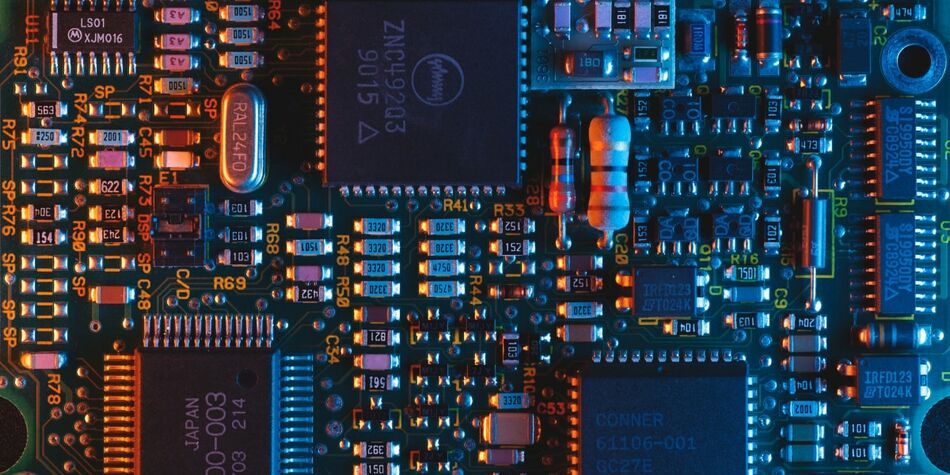What You Need to Know About Embedded Software Development

The first embedded system was developed over 50 years ago. Today, embedded systems surround us at every turn, and are also an important part of the development of Internet of Things (IoT) devices. Developing embedded software has its own subtleties and complexities though. Read on to learn more about the concept and creation of these systems.
What is Embedded Software?
Embedded software is a system that is created and built into any device other than a traditional computer. It is the brain of the device, without which it is just a piece of useless equipment.
Embedded Software Examples
The simplest of the embedded software examples is a traditional calculator that was used before this feature was built into smartphones. Another simple example is a TV remote control or a digital camera. Embedded systems power them all.
You might ask “is an embedded system about software development?” The answer is not always. Sometimes the term firmware is also used for simpler devices such as those listed above.
However, embedded technologies can be much more complex than your coffee machine. Here are some more innovative examples:
- Software for connected cars. Connected cars are new technologies that require adherence to certain quality and safety standards. Thousands of lines of code are written for these vehicles.
- Internal systems of digital smart cameras. Sensor-powered cameras with face identification and recognition features also work thanks to the embedded programming inside. In cameras, the system can be integrated with artificial intelligence and machine learning.
- Built-in smart parking software. Smart parking apps work according to a similar principle, and the built-in electronic system is the heart of the app.
Basic Components of an Embedded System
Most embedded systems need hardware and software to work. It also needs an operating system to control the software, so an embedded system comprises three layers.
1. Hardware, which comprises:
-
- The user interface is a set of features, buttons, and actions that are available to the user along with the display.
- There can be RAM or ROM memory.
- The power supply is the way the system charges, for example, with the help of a power outlet or a battery.
- Some embedded systems are capable of measuring time with timers. For example, a smart home system may turn off the light after waiting five minutes and making sure that there is no movement in the room.
- Communication ports are the way the system communicates with other systems or computers. The USB port is a classic example. However, there are several more ways of communication between an embedded system and other devices including:
- Controller Area Network (CAN)
- Inter-Integrated Circuit (I2C)
- SAE J1587/J1708
- Serial Peripheral Interface (SPI)
- Universal Serial Bus (USB)
- Universal Asynchronous Receiver/Transmitter (UART)
- Firewire
2. Software. Embedded software development means creating machine code using specific programming languages such as C and C++.
3. Embedded operating system. Embedded software development requires a Real-Time Operating System.
Types of Embedded Software Development Tools
Embedded software engineers use different tools to program and design these solutions. Here are the main ones:
- An editor is used to create a code in C or C++.
- A compiler transforms a high-level programming language code into a low-level machine one.
- The assembler will be necessary if the programming code is written in assembly language. It does the same task as a compiler.
- A debugger gets rid of bugs and mistakes.
- A linker combines code pieces and modules to create an executable program.
- An emulator allows an embedded systems engineer to test the performance of the program in a simulated real-life environment and improve the future user experience.
Embedded Software Development Challenges
Embedded software is at the core of popular and rapidly evolving IoT devices. However, there are some challenges that are specific to embedded software development and the Internet of Things as well.
- Stability. When it comes to devices that may be potentially dangerous to the user and other people’s lives, unexpected behavior is unacceptable. That is why it is necessary to follow a standardized approach when creating such systems.
- Safety. The devices with embedded systems should be safe, and the system should be developed in such a way that there are no issues with lifesaving functionality in critical environments.
- Security. Embedded software is directly connected with a particular device, and a mobile application may control the device. This is a bottleneck in embedded solutions, so it is necessary to make sure that there is no possibility of data hijacking.
Manufacturers who are not already developing embedded software will be soon. Taking the challenges above into account, you may need a reliable development partner to support you on the way.
Cprime’s technical team knows how to develop top-notch solutions for the automotive industry, the healthcare sector, and other niche areas where embedded software is widely used. If you’re considering developing or integrating with embedded software, speak to a Cprime development expert today.


